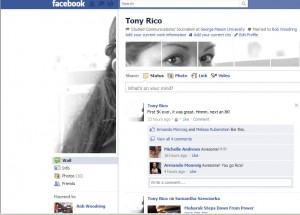Brevity is part of the ABC’s of journalistic writing, and what could be more succinct than using a photo to tell your story? In Chapter 6 of “Journalism Next” Mark Briggs says that “journalism without photographs is like writing without verbs.”
Photos are famously “worth a thousand words” but don’t forget the credit. That is, Briggs cautions against ever using a photo without the proper rights to the image. He suggests you ask first. Or you could check out Creative Commons for images licensed by the creators for sharing, so long as the artist is given credit.
Briggs gives an overview of photography by covering the following topics:
-
Basic information about digital photography
Digital photography allows almost anyone to be a photographer. Familiarize yourself with the type of camera that can fulfill your needs and then get to know your camera. Learn the camera functions, read the manual.
- How to take a good photo
Good photos don’t just happen. Lots of practice and patience goes into making a photo. People should consider composition and lighting. Get close to your subjects and think creatively in how you approach a subject to be photographed.
- How to edit and manage photos on your computer
Once you have captured your images you need to get them on your computer. Learn to have an organized workflow. How will you label your photos and where will you save them? Find photo editing software and edit your photos, keeping in mind that for photojournalism you cannot manipulate or alter a photo in a way that changes the original scene.
- How to publish photos and slide shows that tell the story
Finally you should decide which photos you will use and how you will present them “for maximum impact” Briggs says. Consider photo size, and layout design. Will you create a slide show or a gallery? Will you publish photos in a blog? Just remember what Briggs says, “Blogs without art are lame.”



